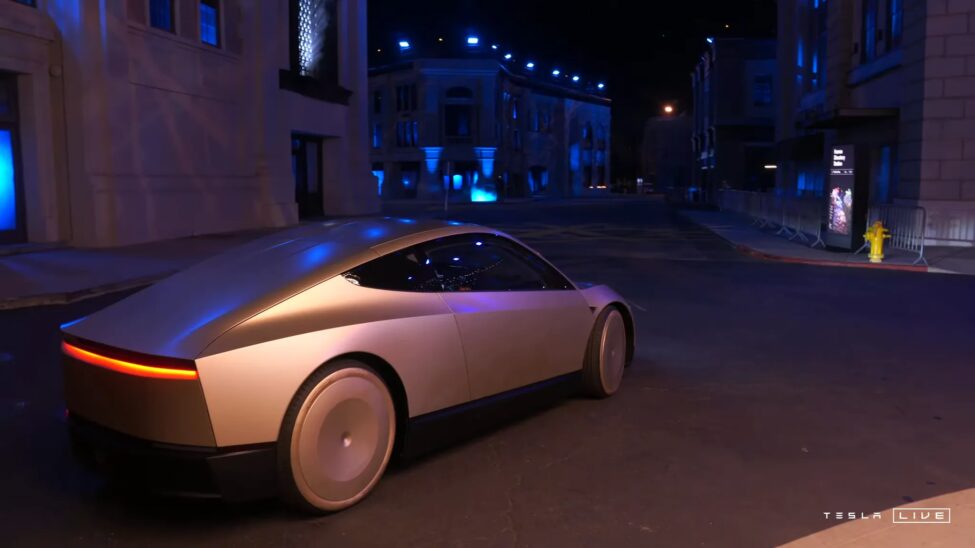
Tesla Robo Taxi: How It Works and Functions So Fast
Tesla Robo Taxi: Future Ride-Hailing
From the time when we have turned into an electric vehicle (EV) space, Tesla has been spearheading the cutting edge technology and sustainable transportation techniques in the automotive industry. The most exciting of all the exciting things coming out of Tesla is probably its Robo-Taxi, a fully autonomous ride hailing service. Tesla Robo-Taxi is thought to change the world of transportation: With cars that drive themselves, without human operators, people’s time is freed.
In this blog, we take a deeper plunge into Teslas ambitious Robo-Taxi project, what it means in the transportation industry and what lies ahead for this radically new service.
What is the Tesla Robo-Taxi?
Tesla Robo Taxis an autonomous vehicle with no driver and provides ride‐hailing services on demand where you only have to push a button. This project is part of Tesla’s overall effort to develop fully self driving (FSD) technology and get to self driving cars. Regular taxis or ride hailing services like Uber and Lyft run on human drivers, but Tesla’s Robo Taxi will be relying entirely on Artificial Intelligence (AI) advanced sensors, powered by Tesla’s FSD software to drive on roads safely and efficiently.
Robo Taxi is an idea born on Elon Musk’s brain, the CEO of Tesla in 2019, The vision was to have a fleet of autonomous vehicles that would ‘make money’ for Tesla owners by giving rides when the vehicle is idle. And Musk touted Tesla’s Robo-Taxi will be important for sustainable transportation in the future, with affordable, green ride hailing services.
How Tesla Robo-Taxi Functions So Fast
They will be equipped with Tesla Full Self-Driving (FSD) technology (what they call); using networks of cameras and sensors, connected to AI algorithms render them capable of seeing obstacles and making ‘real time’ decisions. Robo-Taxi is the name for an autonomous ride with no human control on board where autopilot capabilities such as lane keeping, automatic braking and smart navigation will merge into one.
The back of each Tesla vehicle reads that the car has been equipped with hardware for self driving capabilities: The car is equipped with 12 ultrasonic sensors, eight cameras, ‘and radar ‘that let the car ‘See’ in a 360 degree view’. Utilizing AI based software, robottaxi uses this data to drive itself and adapt to new changes related to road conditions, traffic signals and other vehicles running on the road.
For Tesla’s Robo Taxi to succeed, it really depends on the neural network that drives the FSD system. Over time, this network gets better and better with real world data from driving, not just million miles logged, but with millions of Tesla vehicles all over the world driving. The more data we give a system, the better it can estimate its uncertainty about what it’s observing and how to act and RoboTaxi becomes safer and more reliable in more complex environments.
First Roaming benefits for the Tesla Robo-Taxi
But the Tesla Robo Taxi itself has plenty of reasons that drivers and the broader transportation industry might like. Here are some key advantages:
- Lower Costs
However, when it comes to the exact amount Robo Tax can compress ride sharing costs, that’s perhaps the most compelling thing about the Robo Tax. The reason, of course, is that Tesla does not have to share a human’s pay, and it offers rides much cheaper than Uber and Lyft. They’re things like robo taxi fares Elon Musk has suggested as low as 0.18 $ per mile, but is something passengers could definitely afford. - Environmental Impact
First of all, Tesla Robo-Taxi being a fully electric car makes it an environmentally friendly version to the normal gas driven cars like we all know. Yet, it will cut greenhouse gas emissions and air pollution in urban areas by using clean energy and Tesla’s sustainable EV technology in its Robo-Taxi. And so, this fits nicely in with Tesla’s mission of providing sustainable energy, anywhere. - Increased Accessibility
An autonomous vehicle such as the Robo-Taxi can tackle the challenge because aside from making use of accessible third party roads, it will increase the accessibility to people who could not have drive a car for themselves, the elderly and otherwise disable community. Transportation could then become more accessible, more convenient, with more people having access to it with the addition of Robo Tax fleet at the tip of a button. - Safety Improvements
A Robo Taxi from Tesla will be safer for roads since it reduces the likelihood of accident by human error. Robo taxi will enhance this situation because it will be driven by AI with advanced sensors, which in return will allow it to react quickly and in the right way to dangers thus reducing the chances of accidents. This will cut out distraction and stop drivers from getting into the usual accident causing conditions like when asleep or speeding. - Income Generation for Owners
In order to have passive income in the Robo Taxi network for as many Tesla owners as possible. Tesla owners may be able to make money from their own rides by allowing passengers to ride in their own vehicle, as long as they are not using it, proposed Elon Musk. In that case, the shared economy model can cut the cost of car ownership and the cost overall per mile driven for those who don’t drive daily.
Challenges and Concerns
Tesla’s Robo-Taxi service, while potentially huge benefits, still has a number of challenges and issues we need to solve before such a service is a reality.
- Regulatory Hurdles
Regulatory approval is one of the biggest hurdles in Tesla’s way of massing its Robo-Taxi service. However, it hasn’t been allowed in many countries — with companies allowing driverless vehicles to be used as tested, and more of a wait before the driverless vehicle can be driven without a person’s ‘eye’in the back of their mind. So Tesla will need to partner with regulators to ensure its Robo taxi satisfy all security essentials, in addition to any set local laws. - Public Acceptance
The second part is on getting people to accept the autonomous vehicle. Some people are enthused by the idea of driverless cars, but even they may be skeptical over how much of a machine can learn about their safety. Just like Uber and Lyft’s tests of their semi automated driving vehicles with costs in hilly environments before launching into the city, skepticism will be calmed through a great deal of ride hailing and testing, and proof of the safety and reliability of the fleet of Robo-Taxi. - Technological Maturity
Tesla FSD tech is definitely better than it used to be, but it’s still far from perfect. Yet it required human intervention in a difficult driving area such as, construction zone or bad weather conditions. The Robo-Taxi will need to keep improving its technology so that it can safely drive in all driving environments.
Is the real Tesla robo taxi ever going to happen?
When Robo-Taxi will be robotaxi will depend, Musk has said, on regulators and his ability to make technological advances, especially with regard to his planned battery swap stations. Driving Full Self Driving is the company Tesla had been doing, a reality which could happen once the system improves.
Conclusion
Tesla Robo Taxi is a future of autonomous transportation, of making ride hailing a safer, more accessible and route to a more environment friendly roads. That said, Tesla is in a unique position to drive the charge in autonomous ride hailing, but they’re not entirely out of the woods yet. In the case you get the feeling that we’re moving towards a period of the world where your car drives itself, the Tesla Robo Taxi will most likely be taking part of this exciting new world of movement.
Interested to see what cars Elon Musk drives?



[…] Will Elon use the Tesla robo taxi? […]